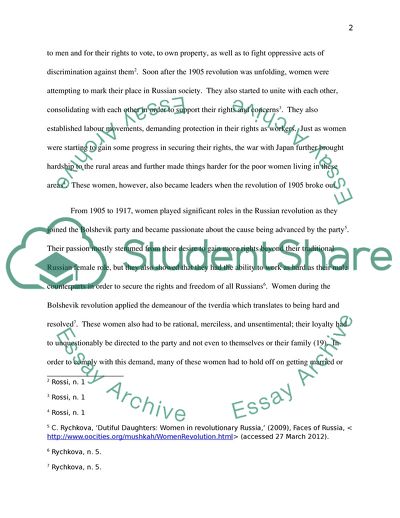Cite this document
(Was There a Place For Women in Russian Revolutionary Movements Essay Example | Topics and Well Written Essays - 1750 words, n.d.)
Was There a Place For Women in Russian Revolutionary Movements Essay Example | Topics and Well Written Essays - 1750 words. https://studentshare.org/history/1770182-was-there-a-place-for-women-in-russian-revolutionary-movements-compre-the-roles-of-women-in-the-1905-and-1917-revolutions
Was There a Place For Women in Russian Revolutionary Movements Essay Example | Topics and Well Written Essays - 1750 words. https://studentshare.org/history/1770182-was-there-a-place-for-women-in-russian-revolutionary-movements-compre-the-roles-of-women-in-the-1905-and-1917-revolutions
(Was There a Place For Women in Russian Revolutionary Movements Essay Example | Topics and Well Written Essays - 1750 Words)
Was There a Place For Women in Russian Revolutionary Movements Essay Example | Topics and Well Written Essays - 1750 Words. https://studentshare.org/history/1770182-was-there-a-place-for-women-in-russian-revolutionary-movements-compre-the-roles-of-women-in-the-1905-and-1917-revolutions.
Was There a Place For Women in Russian Revolutionary Movements Essay Example | Topics and Well Written Essays - 1750 Words. https://studentshare.org/history/1770182-was-there-a-place-for-women-in-russian-revolutionary-movements-compre-the-roles-of-women-in-the-1905-and-1917-revolutions.
“Was There a Place For Women in Russian Revolutionary Movements Essay Example | Topics and Well Written Essays - 1750 Words”. https://studentshare.org/history/1770182-was-there-a-place-for-women-in-russian-revolutionary-movements-compre-the-roles-of-women-in-the-1905-and-1917-revolutions.


